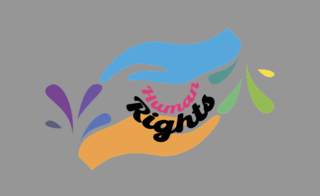Gender
Are Women Worthless After Age 20?
Women and men are valued differently. What does this say about human rights?
Posted May 23, 2022 Reviewed by Ekua Hagan
Key points
- The ways that men are valued compared to women signal differential worth.
- Society dictates that men reach their peak attractiveness around the age of 50, while a woman’s peak comes and goes by age 22.
- Women's rights issues are essentially human rights issues.
“I am not the woman president of Harvard. I am the president of Harvard."—Drew Gilpin Faust
I identify as human—not as male or as female—but human. A human life has innate value. A human, born in America, is endowed with certain inalienable rights. Unfortunately, things become gendered after that. It is all men who are created equal.
For 12,000 years, the hierarchical distribution of power, privilege, and rights has resolutely favored men while entrenching a system that disrespects, oppresses, and exploits women. The notion that all lives have equal value remains aspirational.
Inequality persists between men and women
In our society, the reasons that people are valued is gendered. Men are most valued for their character, including honesty, morality, power, and professional achievement, whereas women are primarily valued for their physical attractiveness and their capacity to be nurturing and empathic. Men reach their peak attractiveness around the age of 50; a woman’s peak comes and goes by the time she reaches 18-22 years old.
Women comprise half of the U.S. workforce, but they also continue to be the family’s primary caregivers and "homemakers," inclusive of housework, organization, and daily tasks such as paying bills. Men engage in 50% more leisure time than women (Kamp Dush, Yavorsky & Schoppe-Sullivan, 2018). You’d think all this extra work would increase a women’s value, but it is quite the opposite. Due to our lowered social status, as more women enter a male-dominated field, the profession becomes feminized and thus devalued, so pay in that field decreases for both men and women.
Worldwide, women make 77 cents to every dollar earned by men, corresponding to a lifetime of inequality and a substantially greater risk of retiring in poverty. "Women’s work," that is healthcare, domestic, and early education careers, are not only underpaid but are also undervalued, despite their societal importance. Women pay more for products marketed to women and are subject to taxes for menstrual products such as tampons. We face rampant sexual harassment and assault in the workplace and are more vulnerable to intimate partner violence in the home. Women are more likely to face chronic hunger, become victims of human trafficking, and, due to industries' reliance on a male standard, are more likely to be injured in automobile crashes and experience pharmacological side effects. The Equal Rights Amendment has still not crossed the finish line.
Medical care for men is all-inclusive, regardless of where their condition is located in their body. Women, on the other hand, must find someone who caters to "women’s issues," and then will likely find their "issue" to be under-researched and psychologized.
Movies and books from a female perspective are maligned as "chick flicks" and "chick lit," implying they are something other than essential dramas or comedies—something smaller and less evolved. Moreover, movie audiences are twice as likely to see male characters on the screen than females, even less if you are watching an action movie (16%) or science fiction (8%) (Bloom, 2020). Even when there is a woman on screen, they will only have a dialogue about 22% of the time (Swanson, 2016), and about half of those conversations will not pass the Bechdel test, where at least two women must talk to one another about something other than a man.
Women are taught that their value comes from being very young, traditionally feminine, and able to bear children. When a protest is organized for equal pay, autonomy, and other basic freedoms, the public is told this is a "women’s march" for "women’s rights"…but women’s rights are human rights, aren’t they?

We all suffer from these oppressive systems of injustice. It is not only women who are impacted by gender norms. Traditional male stereotypes negatively impact men’s physical and mental health, including increased risk for violence, depression, suicide, and substance abuse (Levant & Pryor, 2020). Gender inequality is the most intractable injustice of our age. Although women make up 50.8% of the U.S. population, men make up 73% of Congress. We live in a space where predatory male sexual violence is a slap-on-the-wrist offense but women’s agency and sexual self-determination are considered a threat so great as to justify infantilization, intimidation, discrimination, and government regulation.
Contradictory messages
The truth is, you can’t really know much about me because you know that I'm a woman. Yet so much of how the world responds to women is based on gender. Then, within this gendered construct, there are a thousand contradictory messages that women must negotiate every day.
Women are precious—princesses in need of rescue—but we must shoulder a lifetime of abuse, inequity, and gaslighting. We are evaluated in terms of our bodies—our sexuality—yet no matter what we wear, we are in danger of "asking for it" and being "slut shamed." We are held to an unachievable standard of beauty—then, devalued for every flaw, every pound, every passing year. We are called shrill and silenced because after all, "things have gotten so much better" and "not all men are that way." Yet, we still are not paid an equal wage and must fight for the most basic right—the right to have a choice over what happens within our own bodies.
I am not male—I am not female. I am human.
Women’s rights are human rights!
References
Block K, Croft A, Schmader T. Worth Less?: Why Men (and Women) Devalue Care-Oriented Careers (2018). Front Psychol, 10, 9, 1353. doi:10.3389/fpsyg.2018.01353.
Bloom, D. (February 14, 2020). Here's how gender stereotypes are plaguing Hollywood films despite progress. World Economic Forum. https://www.weforum.org/agenda/2020/02/women-hollywood-starring-role-eq…
Kamp Dush, C. M., Yavorsky, J.E., & Schoppe-Sullivan, S. J. (2018). What Are Men Doing While Women Perform Extra Unpaid Labor? Leisure and Specialization at the Transition to Parenthood. Sex Roles, 78, 11–12, 715–730. https://doi.org/10.1007/s11199-017-0841-0
Levant, R. F., & Pryor, S. (2020). The tough standard: The hard truths about masculinity and violence. New York: Oxford University Press. 216pp.
Parker, K., Horowitz, J. M. & Stepler, R. (December 5, 2017). On Gender Differences, No Consensus on Nature vs. Nurture. Pew Research Center


